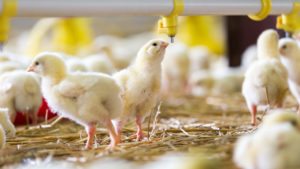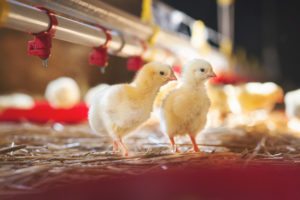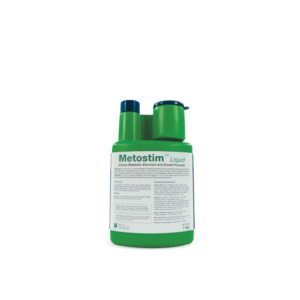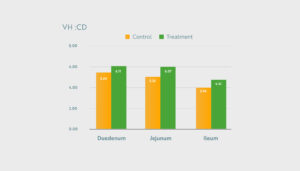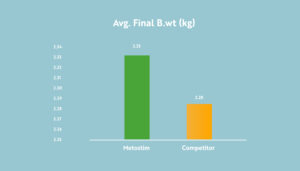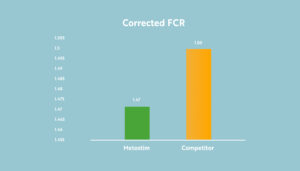Early nutrition plays an important role in the chick’s life cycle. But in reality early feeding is not commonly practised due to multiple reasons like delay in removing of chick from incubator until the maximum number of eggs hatched from the hatching incubator, transit time from hatchery to the farms resulting in the mobilization of body reserves (yolk sac) to support metabolism and thermoregulation. As soon as a chick hatches, it begins losing moisture through its breath, resulting in a decrease in body weight . Yolk utilisation is more rapid in early-fed chick than in chicks withheld from feeding immediately after hatching. The yolk sac has a vital role in maintaining passive immunity until the juvenile immune system becomes mature. If feeding is not started immediately after hatching, yolk becomes a source of nutrients which is a source of passive immunity otherwise. As a result, the chick will be immunocompromised. Poor nutritional status after hatch may inhibit mitotic activity of satellite cells and consequently breast muscle size decreases which accounts for $200 million annually losses in efficiency and product yield to poultry industry (Uni et al., 2004).
Research has stated that early feeding of chicks stimulates growth of the intestines and might have positive effects on faster development of secretory and digestive functions of the gut (Sell et al., 1991) . Over the years, researchers have tried everything from in ovo feeding to gel packs enclosed in chick boxes as means of providing nutrition to chicks before their arrival on the farm. The results of those efforts are mixed, however the first feeding idea has intrigued poultry producers too.
Factors that affect early chick development are gaining interest as the period of time to market progressively decreases and the chick’s first days represent an increasing share of the total time for production. Birds that received early access to nutrients immediately after hatch were 8-10% heavier (Halevy et al., 2000) than those that were held without feed or those who had just received water. However, the percentage of breast was increased by 7-9% (Halevy et al., 2000) in all fed birds, birds have shown that early access to feed post-hatch enhanced satellite cell proliferation and stimulated skeletal muscle growth in broilers, supporting the key role of these cells in dictating muscle size .
- Early access to glucose in form of sugars to newly hatched chicks resulted in improved body weight gain and food intake (Waldroup et al., 1974)
- Early access to macro and micro nutrients have resulted in good development of the skeleton, epithelial and immune system.
- Kogut (2019) reported avian neonatal phase is an important period to manipulate the intestinal microbiome toward beneficial bacterial growth which can be achieved by feeding probiotic,prebiotic or symbiotic products.
Bentoli’s innovative solution, Metostim is designed to accelerate the development of the digestive system, to improve the general immune status of the young birds and to reduce the stress during challenging periods starting from early chick stage till marketing. Metostim is powered by 18 essential and nonessential amino acids, all important fat soluble and water soluble vitamins, electrolytes, essential trace minerals, vitamin C, betaine hydrochloride, curcumin extract and live gut acting probiotic which offers multiple benefits during stressful early chick stage and growing period of chicken
Recent Histopathology study conducted in Bentoli’s research facility proved that treatment group supplementation with Metostim had higher VD: CH ratio in all segments of SI in comparison to another group supplemented with another product claiming similar benefits in chicks.
Higher VH:CD ratio showed better nutrient absorption, which resulted in decrease in FCR and increase in body weight in the flock supplemented with Metostim
Early chick nutrition offers the optimum development of gut health and morphology resulting in better production.
